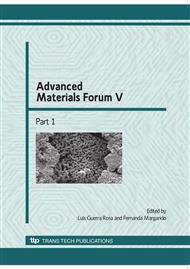p.1496
p.1504
p.1511
p.1518
p.1525
p.1533
p.1541
p.1548
p.1555
Ultrasonic Inspection of Composite Materials Using Minimum Entropy Deconvolution
Abstract:
In this work, the Minimum Entropy Deconvolution (MED) method, developed for ultrasonic signals, is used to address the problem of delamination defect detection in Composite Materials. Standard deconvolution techniques suppose that the wavelet is minimum phase but generally make no assumptions about the amplitude distribution of the primary reflection coefficient sequence. For a white reflection sequence the assumption of a Gaussian distribution means that recovery of the true phase of the wavelet is impossible; however, a non-Gaussian distribution in theory allows recovery of the phase. It is generally recognized that primary reflection coefficients typically have a non-Gaussian amplitude distribution. The minimum entropy deconvolution (MED) method supposes whiteness but seek to exploit the non-Gaussianity. This method do not assume minimum phase. The deconvolution filter is defined by the maximization of a function called the objective. The algorithm is tested on simulated data and also tested on real ultrasonic data from multilayered composite materials.
Info:
Periodical:
Pages:
1555-1561
Citation:
Online since:
January 2010
Authors:
Price:
Сopyright:
© 2010 Trans Tech Publications Ltd. All Rights Reserved
Share:
Citation:


